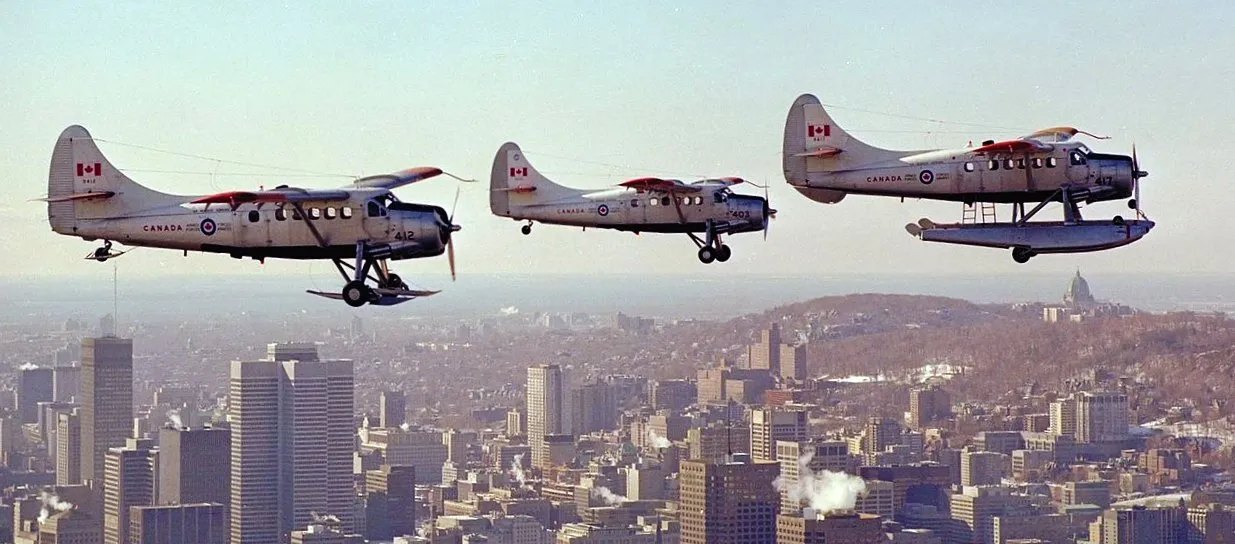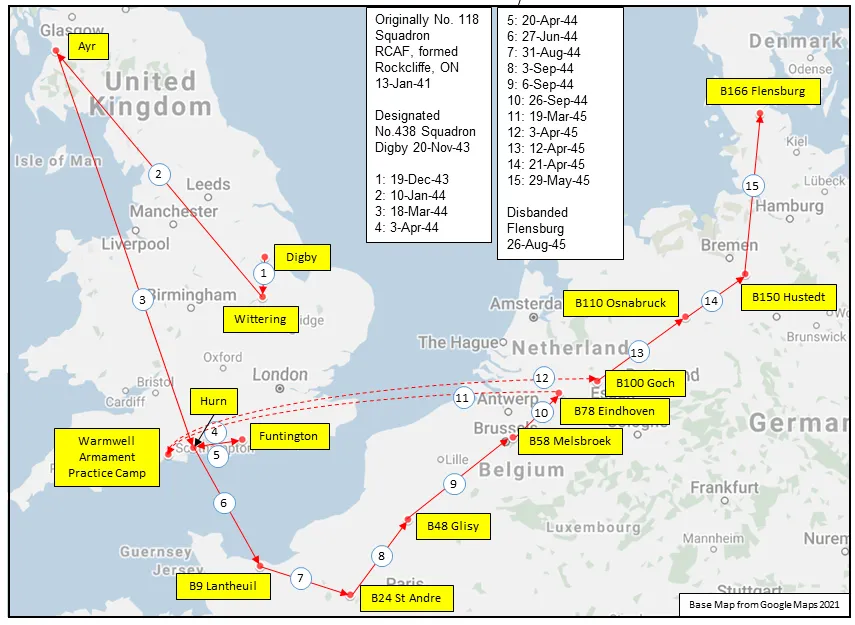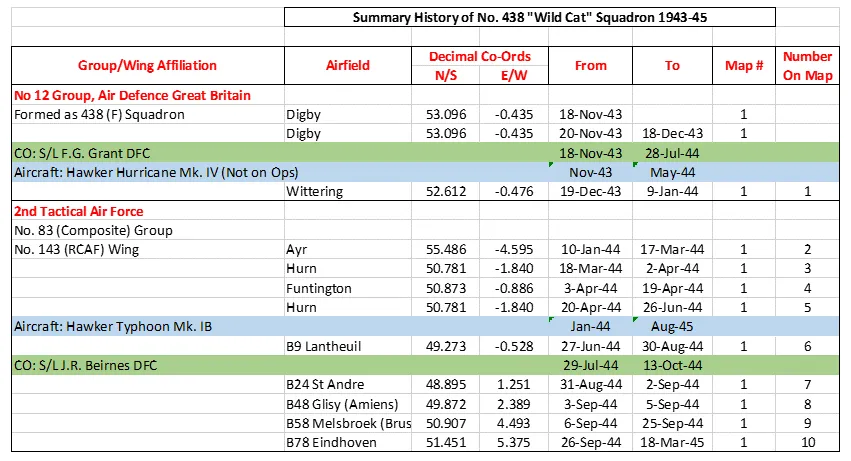Bourdeau, Yvon Joseph Cheri Alphonse
Killed in Flying Accident 1981-10-02


Birth Date: 1950-February-09
Born: St. Urbain, Quebec
Son of Ral Bourdeau and Marie Therese Bourdeau de Mercier, Quebec.
Home: St. Urbain, Quebec
Enlistment: Montreal, Quebec
Enlistment Date: 1974-01-02
Service
RCAF
Unit
438 Sqn- Squadron
Going Down
Base
Rank
Captain
Position
Captain
Service Numbers
Home
 St. Urbain, Quebec
St. Urbain, Quebec
Otter 9417
de Havilland Canada Otter

de Havilland CC-123 Otter formation, No. 438 Squadron, RCAF, over Montreal, Quebec.
The de Havilland Canada DHC-3 Otter is a single-engined, high-wing, propeller-driven, short take-off and landing (STOL) aircraft. It was conceived to be capable of performing the same roles as the earlier and highly successful Beaver, including as a bushplane, but is overall a larger aircraft.
The DHC-3/CC-123/CSR-123 Otter was used until 1980 by the RCAF and its successor, CF Air Command. It was used in Search and Rescue, as the "CSR" denotes Canadian Search (and) Rescue (type 123) and as a light utility transport, "CC" denoting Canadian Cargo. During the Suex Crisis, the Canadian government provided assistance to the UN Emergency Force (UNEF). HMCS Magnificent carried 4 Otters from Halifax to Port Said, Egypt, early in 1957, with all four flying off unassisted while the ship was at anchor. This was the only occasion when RCAF fixed wing aircraft operated from a Canadian warship. It was also operated on floats on water and skis for winter operations on snow. The EDO floats also had wheels for use on runways (amphibious). It was used as army support dropping supplies by parachute, and also non-parachute low-speed, low-altitude air drops, to support the Canadian Army on manoeuvres. In the end it was operated by the Primary Air Reserve in Montreal, Toronto, Edmonton and Winnipeg, with approximately 10 aircraft at each base, as well as by the RSU (Regular (Forces) Support Units) at those bases. It was usually flown with a single pilot (Commissioned Officer) in the left seat and a Technical Air Crewman (NCO) in the right seat. The Kiowa helicopter replaced it in Air Reserve squadrons.
Although the Otter found ready acceptance in bush airlines, as in a similar scenario to the DHC-2 Beaver, the US Army soon became the largest operator of the aircraft (184 delivered as the U-1A Otter). Other military users included Australia, and India, but the primary role of the aircraft as a rugged bush plane continues to this day.
An Otter crossed the South Pole in 1957 (see Commonwealth Trans-Antarctic Expedition). The Otter is also popular in the skydiving community and can be found in many dropzones throughout the world.Harold Skaarup web page
438 Sqn Going Down ("Wild Cat")
History of the Squadron before and during World War II (Aircraft: Hurricane IV, Typhoon IB)

438 Squadron had its roots dating back to September 1934, when it was created in the auxiliaries in Montreal, Quebec as 18 (Bomber) Squadron, at the behest of local francophone World War I veterans and influential members of the local business community and was the first RCAF francophone squadron. Renumbered 118 Squadron on 15 November 1937, its reservists were activated for full time war service on 3 September 1939. The unit’s role changed to Coastal Artillery Co-operation on 28 October and it moved to St John, New Brunswick  , where it was equipped with Armstrong Whitworth Atlas and Westland Lysander aircraft. 118 Squadron was re-designated a fighter unit on 8 August 1940 and was disbanded on 27 September 1940. The squadron was re-formed at Rockcliffe, Ontario
, where it was equipped with Armstrong Whitworth Atlas and Westland Lysander aircraft. 118 Squadron was re-designated a fighter unit on 8 August 1940 and was disbanded on 27 September 1940. The squadron was re-formed at Rockcliffe, Ontario  in December 1940-January 1941 and was equipped with Grumman Goblin Aircraft. It moved to Dartmouth, Nova Scotia
in December 1940-January 1941 and was equipped with Grumman Goblin Aircraft. It moved to Dartmouth, Nova Scotia  in July 1941. In November, it re-equipped with Curtiss Kittyhawk aircraft, and in June 1942 transferred to Annette Island, Alaska
in July 1941. In November, it re-equipped with Curtiss Kittyhawk aircraft, and in June 1942 transferred to Annette Island, Alaska  , as part of the Canadian reinforcement of the US Army Air Force on the west coast. It was selected as one of the six home fighter squadrons to be sent overseas in October 1943.
, as part of the Canadian reinforcement of the US Army Air Force on the west coast. It was selected as one of the six home fighter squadrons to be sent overseas in October 1943.
It was the first of the six home squadrons to be transferred overseas without its aircraft, and was re-designated No. 438 (FB) Squadron RCAF at Digby, Lincolnshire, England  on November 18, 1943. It flew Typhoon aircraft in the preparation for D-Day and afterwards gave close support to the ground troops by dive-bombing and strafing enemy strongpoints, bridges, and road and rail traffic. The squadron moved with the ground troops through France, the Low Countries, and Germany. It was disbanded at Flensburg, Germany
on November 18, 1943. It flew Typhoon aircraft in the preparation for D-Day and afterwards gave close support to the ground troops by dive-bombing and strafing enemy strongpoints, bridges, and road and rail traffic. The squadron moved with the ground troops through France, the Low Countries, and Germany. It was disbanded at Flensburg, Germany  on August 23, 1945.
on August 23, 1945.
In the course of operations, the squadron flew 4022 sorties for the loss of 28 aircraft and 31 pilots, of whom 17 were killed, 5 missing, and 6 POWs. They dropped2070 tons of bombs and accounted for a large number of rail and road vehicles. The squadron amassed 5 DFCs. Battle Honours were: Fortress Europe 1944, France and Germany 1944-45, Normandy 1944, Arnhem, Rhine.Wikipedia, Kostenuk and Griffin
Maps for Movements of 438 Squadron 1943-45
 |
438 Squadron History Summary 1943-45

438 Squadron History Summary 1943-45 Page 2

History of the Squadron Post-WWII (Aircraft: Harvard, Vampire III, Silver Star, Sabre 5, Expeditor, Otter, Kiowa, Griffon)
The squadron was re-formed at St. Hubert, Quebec on 15 April 1946, flying de Havilland Vampires and Canadair Sabres, becoming 438 "City of Montreal" Squadron. With unification, it took on the role of an Air Reserve Squadron based at Canadian Forces Base Montreal flying the CC-123 de Havilland Otter and CH-136 Kiowa helicopter. In January 1996, the Kiowas were retired from service and that April the Squadron took delivery of its first CH-146 Griffon. The squadron simultaneously absorbed 401 (Kiowa OTU) Squadron and 1 Tactical Aviation Support Squadron with many Regular Force members. The arrival of the Aviation Tactics Flight in 2015 gave 438 Squadron its current dynamic mixed composition. 438 Squadron also proudly boasts a full 35 piece professional Air Reserve military band. Their reserve status notwithstanding, the members of the 438 Squadron Band are all professional musicians with many possessing remarkable academic achievements in their field.
on 15 April 1946, flying de Havilland Vampires and Canadair Sabres, becoming 438 "City of Montreal" Squadron. With unification, it took on the role of an Air Reserve Squadron based at Canadian Forces Base Montreal flying the CC-123 de Havilland Otter and CH-136 Kiowa helicopter. In January 1996, the Kiowas were retired from service and that April the Squadron took delivery of its first CH-146 Griffon. The squadron simultaneously absorbed 401 (Kiowa OTU) Squadron and 1 Tactical Aviation Support Squadron with many Regular Force members. The arrival of the Aviation Tactics Flight in 2015 gave 438 Squadron its current dynamic mixed composition. 438 Squadron also proudly boasts a full 35 piece professional Air Reserve military band. Their reserve status notwithstanding, the members of the 438 Squadron Band are all professional musicians with many possessing remarkable academic achievements in their field.438 Tactical Helicopter Squadron is located at Saint-Hubert, Quebec. With a typical staffing level of 50 percent reservists and 50 percent Regular Force members, 438 Squadron typifies the Total Force concept. Equipped with CH-146 Griffons, 438 Squadron’s tasks include armed and unarmed tactical utility transport, training tactical helicopter aircrew personnel in basic and advanced aviation tactics, technical training of CH-146 ground crew personnel and flight engineers, and the periodic maintenance of CH-146 fleet aircraft. They also include as residual capabilities search and rescue, reconnaissance, and support to federal, provincial and local law enforcement agencies.
 Canadian Virtual War Memorial
Canadian Virtual War Memorial www.findagrave.com
www.findagrave.com
 Otter
Otter Wikipedia Otter
Wikipedia Otter Harold A Skaarup Web Page
Harold A Skaarup Web Page